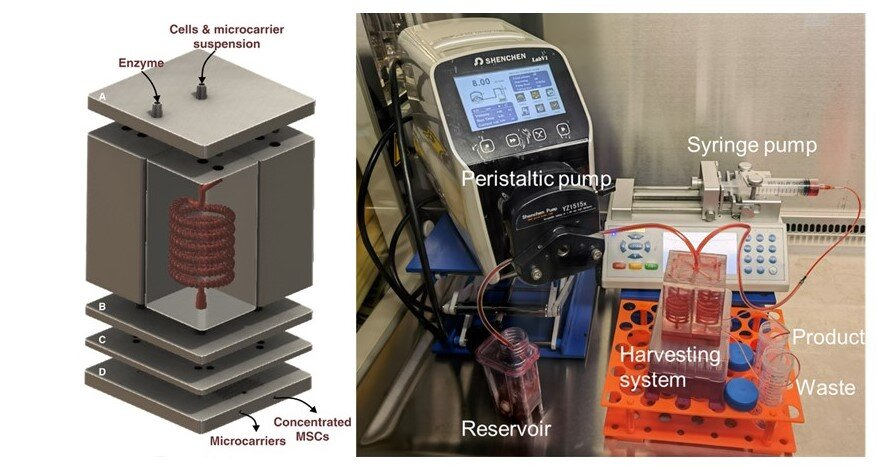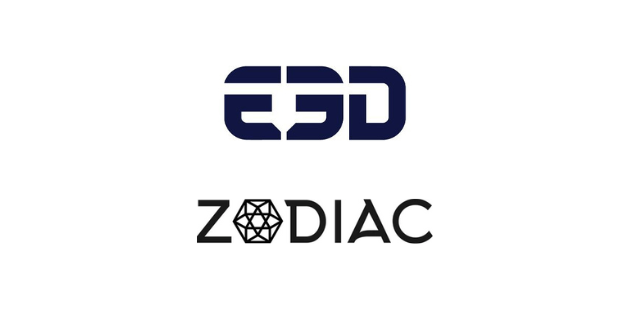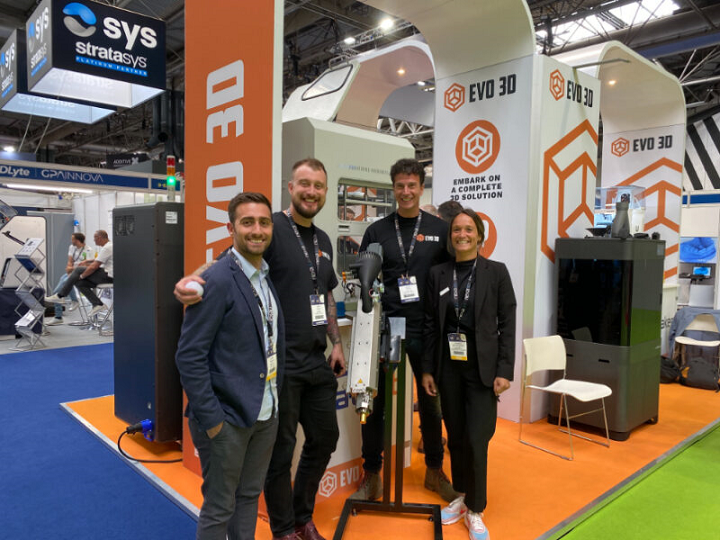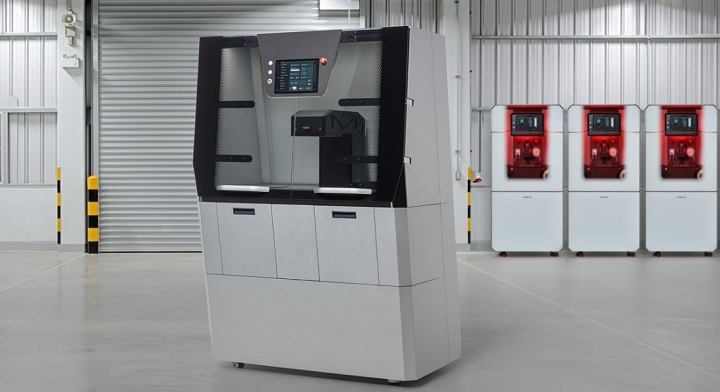Starting with business news in today’s 3D Printing News Briefs, as E3D has acquired ZODIAC, a nozzle and aftermarket FDM solutions firm, and EVO 3D is partnering with CEAD. Moving on to materials, Admatec has released a new 3D printer for metal and ceramics, Desktop Metal is 3D printing closed cell foam, and AMGTA has published a process for the safe transport and recycling of metal powder condensate waste. Finally, researchers in Australia developed a unique 3D printed system for harvesting stem cells from bioreactors.
E3D Announces Acquisition of ZODIAC
First up, E3D, which supplies nozzles, extruders, and hotends for 3D printing, announced that it has acquired ZODIAC, a nozzle and aftermarket FDM 3D printing solutions firm that was just founded in 2020. ZODIAC supplies CRB and PRO coated nozzles to 3D printer brands like Zortrax, Raise3D, and Ultimaker, in addition to belt printers like the CR-30. E3D has acquired all of the firm’s IP and assets, which it believes will help increase the strength of its own supply strength for all product lines. E3D believes that by using its global reseller network, it will be able to grow ZODIAC’s existing product lines, and make its offering available to a wider market. Terms of the acquisition have not been disclosed.
“I am personally thrilled to be introducing the ZODIAC product line to E3D customers, both current and new. Their high quality offering complements the E3D brand and means we have confidence to back the ZODIAC name,” said E3D Head of Product Strategy & Marketing Clare Difazio. “I look forward to bringing this brilliant range of aftermarket upgrades to an even wider range of printers than we supply today. For us, it means we can be assured that great quality extrusion is more accessible than ever. The future of AM is exciting and we’re here for it.”
EVO 3D Partnering with CEAD
3D printing solutions provider EVO 3D and large-format 3D printing supplier CEAD, located in the Netherlands, have announced that they are partnering up. EVO 3D is working to advance end-to-end integration of robotic 3D printing, which requires the right materials, hardware and software, technical support, and employee training to be successful. In this new partnership, the UK company will offer CEAD’s technology components as part of a customized pellet 3D printer package, allowing EVO 3D to achieve a robot package with higher output. This package will consist of CEAD’s lightweight E25 pellet extruder, integrated on a KUKA robot, along with CEAD’s 2 x 1 m print bed and pellet dryer. The main target of this pellet 3D printer robot package will be the UK, specifically for end part applications for design and recreational uses, like theme parks.
“The addition of CEAD to our partnership is one we are not only very proud of but is also an essential one. We also have a keen eye on the CEAD AM Flexbot Solutions, this is something we are keen to offer in the future,” said Jake Hand, marketing director of EVO 3D.
Admaflex300 3D Printer Achieves Over 12M Pixels a Layer
Admatec, which was just acquired by Nano Dimension, announced that its Admaflex 300 metal and ceramics 3D printer is capable of printing more than 12 million pixels in a single layer, which majorly increases its efficiency and throughput. Admatec developed its 3D printing technology, which combines DLP and tape casting and can handle high viscosity slurries without sedimentation, back in 2013. Since it introduced the Admaflex130 three years later, and now offers the Admaflex300 as well, the company has delivered many printers around the world to customers like 3D printing contract manufacturers, universities and government labs, and ceramic and metal parts producers. These users are printing high-quality metal and ceramic parts with narrow tolerances and great material properties for multiple applications, such as opto-mechatronics, semiconductors and electronics, refractories, jewelry and watches, medical tools, aviation and aerospace, and more. The Admaflex300 is now available with a pixel resolution of 40 µm and a 202 x 102 mm projection size, which delivers over 12 million pixels per layer.
“To answer the question “should I choose one big Admaflex300 printer or 3 smaller Admaflex130 machines” it is good to know that the investment cost for an Admaflex300 is only 50% more compared with the Admaflex130 with comparable capabilities. If your aim is R&D and material development with the smallest amount of material, the Admaflex130 is the best solution for small parts. If you plan to scale up to maximum productivity, the Admaflex300 will be the most economical solution, with more than 3 times the production output of a smaller machine with 102×64 mm platform. In case you have budget for the Admaflex130 but not sufficient for the Admaflex300, you could even consider an Admaflex300 with specifications like the 130 machine at the price level of the 130 machine, still allowing you to upgrade later on to the full capabilities and specifications of the Admaflex300 machine.”
Desktop Metal 3D Printing Closed Cell Foam
Desktop Metal introduced its new family of expandable photopolymer resins called FreeFoam, which contain heat-activated foaming agents that are 3D printed with Digital Light Processing (DLP) technology for volume production of durable, dimensionally accurate closed cell foam parts. Part of the DuraChain category of one-part photopolymers, this material was developed by Desktop Metal’s subsidiary Adaptive3D, and will initially be available exclusively for the ETEC Xtreme 8K top-down DLP system. FreeFoam parts can be expanded on-demand during a brief oven heating cycle, and this controllable process causes the resins to consistently expand 2-7 times their initial size. In the future, Desktop Metal plans to offer several grades of FreeFoam resins with various Shore hardness values and other material properties, including water resistance.
“FreeFoam is one of the most exciting and commercially significant photopolymer solutions to come to market in the industrial printing space in years. The market for conventionally manufactured foam has many challenges – from expensive molds that limit designs, to dense and heavy foams that absorb water and are expensive to ship and drive, to the inability to easily dial in strength and Shore hardness values in specific foam designs,” said Ric Fulop, Founder and CEO of Desktop Metal.
“We’re especially excited to reveal our FreeFoam innovation in Metro Detroit, where our new foam material can help lightweight cars and trucks while preserving the performance and comfort expected in foam seating. With FreeFoam, Desktop Metal is ready to liberate the foam market from its many challenges.”
AMGTA’s Process for Transport, Recycling of Metal Powder Waste
The Additive Manufacturer Green Trade Association (AMGTA), launched in November 2019 to promote the environmental benefits of AM, has issued a report that outlines the necessary requirements for passivating metal powder condensate waste for transportation and recycling. Metal condensate is the term used for the excess powder and soot blown off the build plate during powder bed fusion processes, and until now had been treated as a hazardous material and disposed of at high cost. AMGTA member Sintavia, along with KBM Advanced Materials, developed the unique process for safely recycling and transporting it, which involves mixing the metal powder condensate with a removable resin to make it non-hazardous. This enables safe shipping to a recycling plant.
“Today’s report is a must-read for any company involved in laser powder bed fusion metal additive manufacturing. Not only does this new process reduce transportation costs, but it is also reversible, meaning that metal recycling companies can have unsoiled access to the underlying powder once it is received—thus allowing for the potential to recycle waste material that previously had to be put in a hazardous waste landfill,” explained Sherri Monroe, Executive Director of the AMGTA.
3D Printed System for Harvesting Stem Cells from Bioreactors

Modular 3D printed microfluidic system. Credit: Majid Warkiani et al. Bioresources and Bioprinting 2022.
Finally, researchers from the University of Technology Sydney published a study about their development of a unique 3D printed system for harvesting stem cells from bioreactors. Stem cells, because of their ability to replace damaged cells, are very promising for disease and injury treatment, but the technology currently used to harvest them is lengthy and expensive. The research team, in collaboration with Australian biotech company Regeneus, used 3D printing and microfluidics to, as biomedical engineer Professor Majid Warkiani said, “integrate a number of production steps into one device” that makes stem cell therapies less costly and more widely available. The system processes mesenchymal stem cells, which can divide and differentiate into multiple tissue cells, such as muscle, bone, and connective tissue; once the cells are extracted from human blood, bone marrow, or fat tissue, they’re transferred to a bioreactor and combined with microcarriers to enable proliferation. The 3D printed system combines a spiral microfluidic separator, four micromixers, and a microfluidic concentrator, which all work together to detach and separate the cells and concentrate them for processing.
“While this world-first system is currently at the prototype stage, we are working closely with biotechnology companies to commercialize the technology,” said Professor Warkiani. ” Importantly, it is a closed system with no human intervention, which is necessary for current good manufacturing practices.”
Subscribe to Our Email Newsletter
Stay up-to-date on all the latest news from the 3D printing industry and receive information and offers from third party vendors.
You May Also Like
3D Printing Unpeeled: New Arkema Material for HP, Saddle and Macro MEMS
A new Arkema material for MJF is said to reduce costs per part by up to 25% and have an 85% reusability ratio. HP 3D HR PA 12 S has been...
3D Printing News Briefs, January 20, 2024: FDM, LPBF, Underwater 3D Printer, Racing, & More
We’re starting off with a process certification in today’s 3D Printing News Briefs, and then moving on to research about solute trapping, laser powder bed fusion, and then moving on...
3D Printing Webinar and Event Roundup: December 3, 2023
We’ve got plenty of events and webinars coming up for you this week! Quickparts is having a Manufacturing Roadshow, America Makes is holding a Member Town Hall, Stratafest makes two...
Intuitive Machines Debuts $40M Hub for Lunar Ambitions and 3D Printing Tech
Best known for its pioneering work in lunar exploration and its development of the Nova-C lunar lander, Intuitive Machines (Nasdaq: LUNR) has marked yet another significant milestone. The leading space...




































